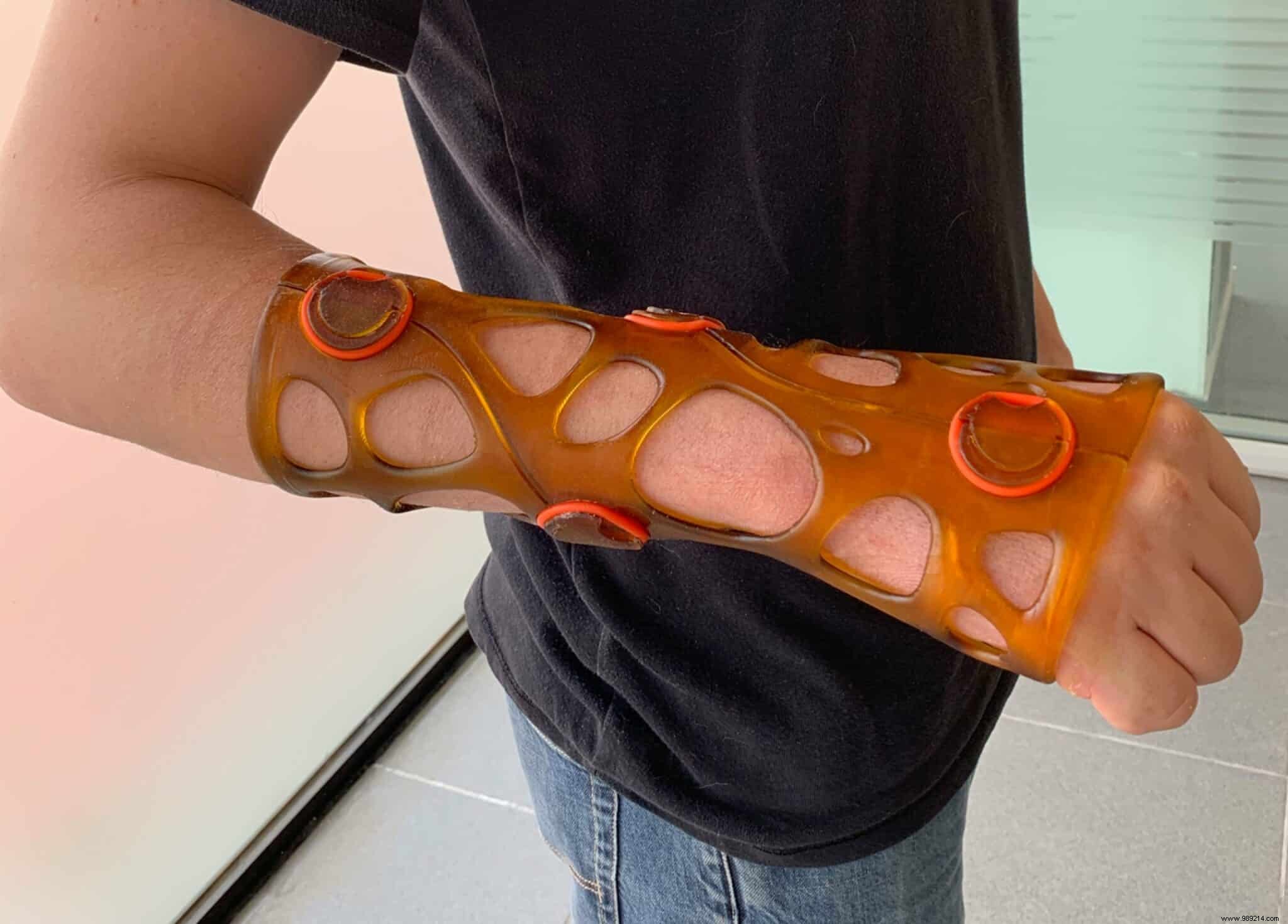In order to relieve people with fractures, a Spanish company has developed a 3D printed cast that avoids the bad sides of traditional casts. In addition, it has the particularity of being able to be printed by a professional using a mobile application. Thus, the patient benefits from better comfort and the professional from considerable time savings.
Itching, heaviness, not water resistant or even unpleasant odors, there are many disadvantages of traditional plasters . The Spanish start-up Xkelet has recently offered a plaster technology that avoids this kind of concern in order to better treat fractures and other sprains. Winner of the Red Dot design competition in 2021, the concept is distinguished by the use of 3D printing. In addition, the material used in the composition of the plaster is a plastic that complies with the ISO 10993-1 standard (biological risks). It is therefore a medical device. Let's also mention an important specificity:its weight. Indeed, Xkelet's cast weighs only one hundred grams .
However, let's not forget to point out a rather appreciable novelty. Indeed, the production of the plaster can be regulated and controlled by means of a mobile application . Named Xkscan, the latter uses algorithms capable of developing completely autonomous plaster models.

The device is intended for healthcare professionals whose main interest would be to save time. The improved comfort for the patients is indeed accompanied by a simplification of the manufacture of the cast . Marketing manager at Xkelet, Pedro V. Hernandez explained that a patient can be fitted quickly. In less than five minutes, it is possible to detect the problem, scan the limbs and edit a file that the 3D printer will then use to manufacture the part. The last step is therefore the impression of the plaster, requiring between thirty and seventy minutes .
If the concept of Xkelet seems very successful, there are other concepts quite similar . In 2019, the American start-up Cast21 unveiled a type of plaster qualified at the time as revolutionary. Made of resin, the latter already had breathable and waterproof properties. We should also mention the company Skincasts, which presented its project at the last CES 2022. Also using 3D printing, this company, on the other hand, only offers light splints.
Here is a video presentation of the Xkelet technology: